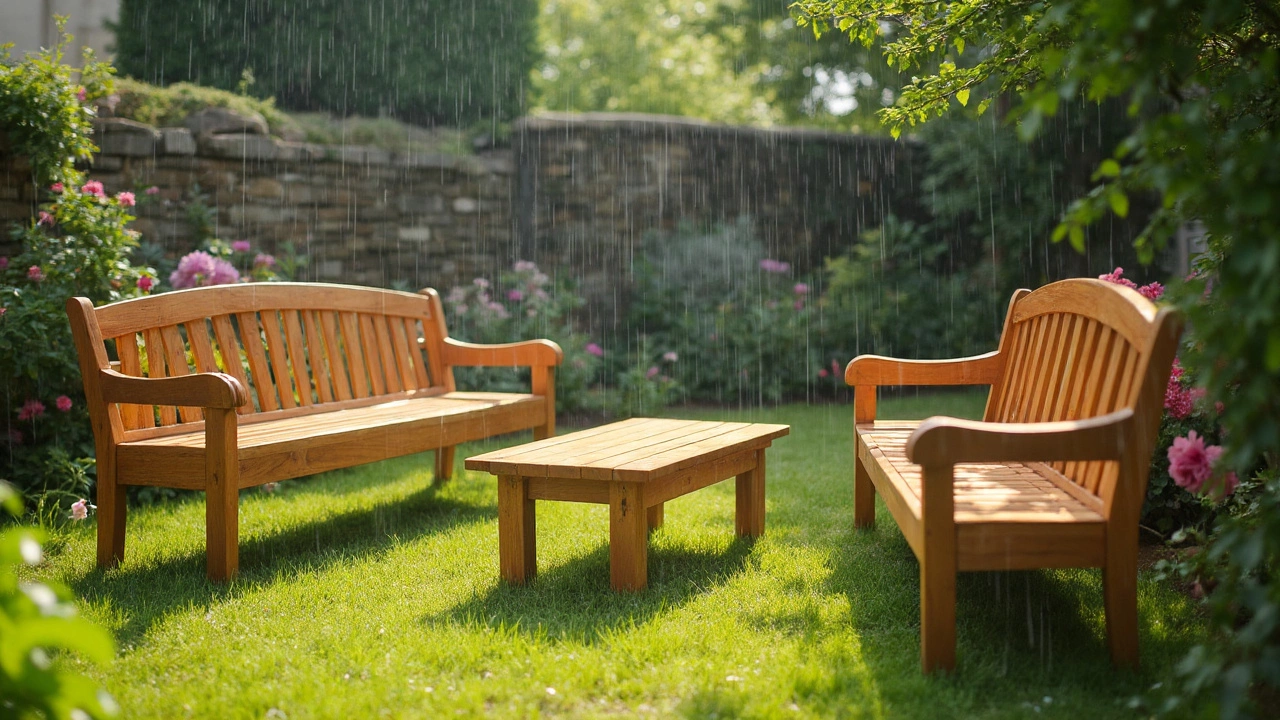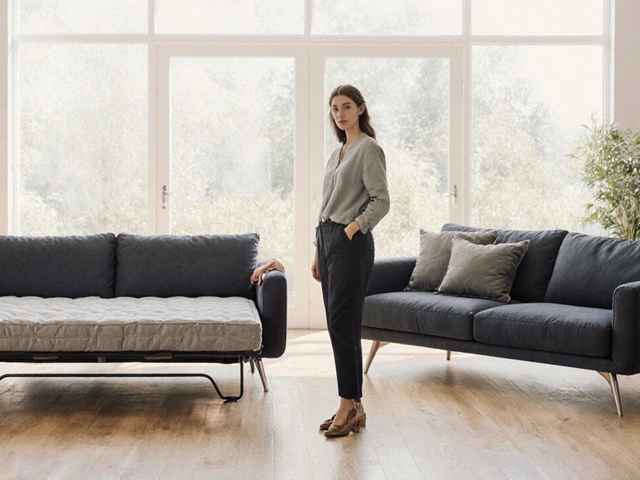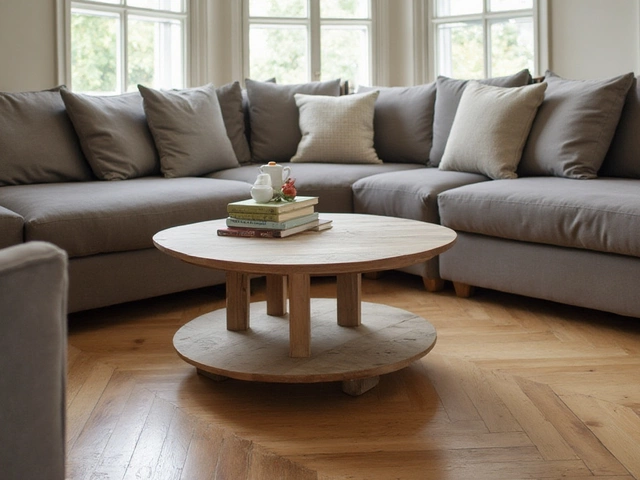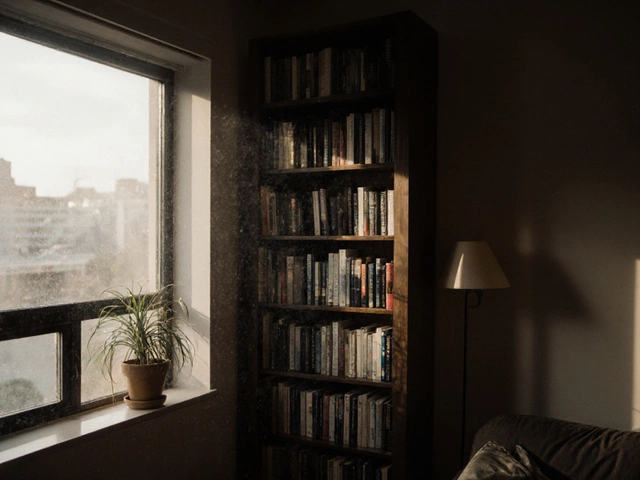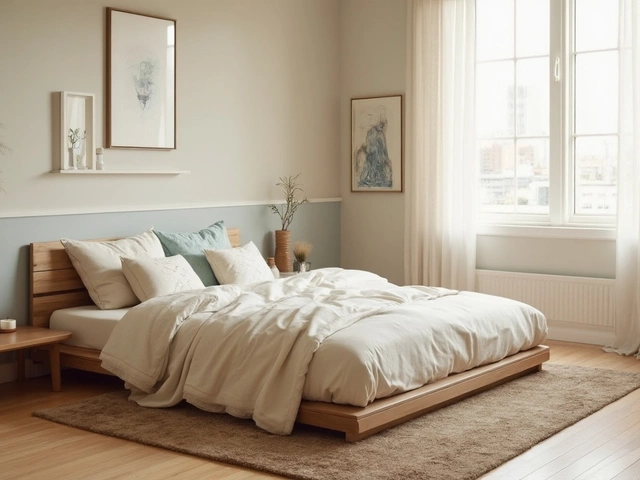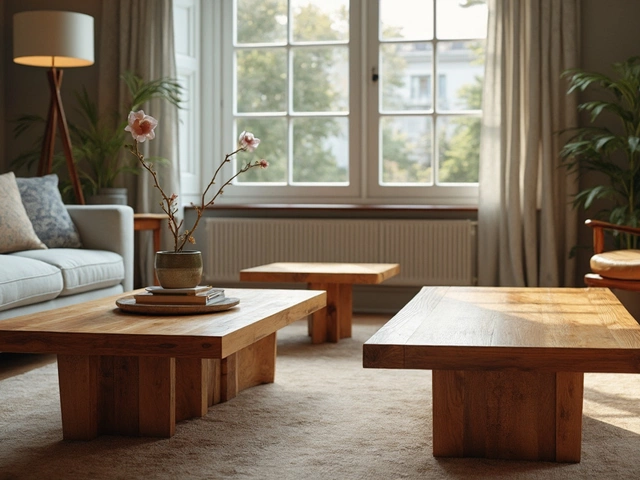If you’ve ever watched your garden chair crack or your deck get mushy after just a couple of rainy seasons, you know not all wood is made for the outdoors. Even the best-looking set won’t last long if it’s built from lousy timber. The truth is, some woods just shrug off bad weather, while others break down fast when they get wet, roasted in the sun, or invaded by bugs.
What really matters isn’t the price tag or the paint job—it’s the type of wood underneath. Some, like teak or ipe, are so packed with natural oils they basically waterproof themselves. Others soak up moisture and turn into compost before you can say 'spring cleaning.' So, knowing which woods hold up outdoors isn’t just good for your wallet; it lets you enjoy the backyard without worrying about constant repairs.
- Why Some Woods Last Longer Outdoors
- Top Outdoor Woods Ranked
- Keeping Outdoor Wood Alive: Practical Care Tips
- Smart Choices and Mistakes to Avoid
Why Some Woods Last Longer Outdoors
Ever wonder why some backyard benches still look fresh after years, while others pretty much fall apart after one bad season? It’s all about what’s inside the wood and how it fights off weather, rot, and bugs. Some outdoor wood types, like teak and ipe, have special natural oils that work like built-in raincoats. Water just slides right off, so rot and mold don’t stand a chance.
Hardwood vs. softwood is another big factor. Most durable garden furniture uses dense hardwoods. The tighter the grain, the harder it is for water or insects to sneak in. On the other hand, softwoods like pine or fir soak up water more easily, swelling, warping, and cracking a lot faster unless you slap on a waterproof finish every year.
- Weather-resistant wood like cedar has natural chemicals (thujaplicins, for nerds out there) that bugs and fungi hate. That’s why old cedar fences are still standing after decades.
- Teak, used on fancy boat decks, can handle salt, rain, and sun without trouble because of its natural oiliness.
- Some tropical woods, like ipe and mahogany, are so dense that termites can’t even chew through them.
It’s not just about species, though. How the wood is treated also matters. Pressure-treated woods get chemicals baked right in, making them more long-lasting wood for outdoors than plain untreated lumber. But, these can be less eco-friendly than natural choices.
| Wood Type | Durability (Years Unprotected) | Natural Oils/Resins |
|---|---|---|
| Teak | 40+ | High |
| Cedar | 15-20 | Medium |
| Ipe | 30+ | High |
| Pine (untreated) | 2-5 | Low |
| Pressure-treated Pine | 15-20 | Added during treatment |
So, when picking long-lasting wood for your patio or garden, remember: it’s the wood’s natural defenses—and sometimes a little human help—that keep your furniture looking good through rain, shine, and the occasional spilled drink.
Top Outdoor Woods Ranked
Not all outdoor wood works the same. Some can survive years of rain and sun, while others are gone in a season or two. Here’s how the usual suspects really stack up for garden furniture that you want to last.
- Teak: The king of outdoor wood, hands down. This stuff’s so packed with oil it’s practically waterproof. You’ll see teak benches in parks after decades and they’re still solid. It doesn’t splinter much, and bugs want nothing to do with it. One knock—it’s pricey, but you’ll forget that after a few years of zero maintenance.
- Ipe: This Brazilian hardwood is like the tank of garden furniture woods. Some call it 'ironwood' because it’s so dense and heavy. It laughs at rain and sun, and termites can’t eat it. Ipe furniture or decking can last 25–30 years with barely any help—just oil it once a year if you like a rich color.
- White oak: Not to be confused with red oak, which rots fast outdoors. White oak, on the other hand, holds up great in wet weather thanks to its tight grain. Lots of classic outdoor benches are made from this stuff. It’s a solid choice if teak or ipe is over budget.
- Cedar: This wood stays tough outside and even smells good. It’s naturally bug-resistant and pretty lightweight, so it’s easy to build with. Cedar does turn gray over time, but that’s just surface-level; it stays tough underneath.
- Redwood: If you’re out west, redwood is a solid pick. It’s got built-in resistance to moisture and pests. Like cedar, it’ll weather to gray if you skip sealing, but it keeps its strength for years.
Some woods get hyped but won’t go the distance outside. Pine, for example, starts cheap but often rots or warps unless you seal, stain, or use pressure-treated options. Same with cheap acacia or eucalyptus—unless you baby them, they dry out, crack, and just don’t last like the heavyweights.
Here’s a quick look at how these choices stack up on lifespan and maintenance:
| Wood Type | Outdoor Lifespan (Years) | Maintenance Needed |
|---|---|---|
| Teak | 20–40+ | Low |
| Ipe | 25–40 | Low |
| White Oak | 15–25 | Medium |
| Cedar | 10–20 | Low-Medium |
| Redwood | 15–25 | Low-Medium |
So, when you see flashy sales on garden sets that look almost too good to be true, check the wood type first. It can save you a lot of cash and hassle down the line.
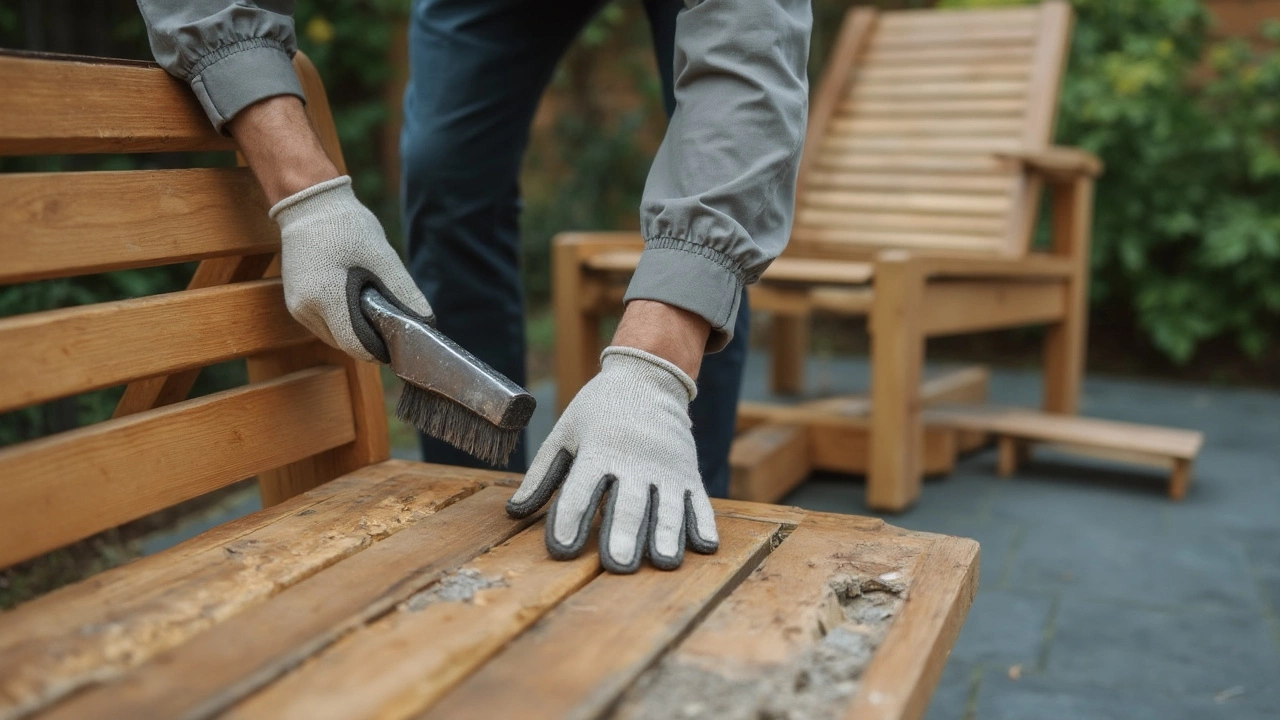
Keeping Outdoor Wood Alive: Practical Care Tips
So, you’ve picked a tough outdoor wood for your garden furniture, but the job’s not done. Even the best woods—teak, ipe, cedar—need some love if you want them looking good year after year.
The real secret? Staying ahead of the game. Don’t wait for rot or mold to show up before doing something. Regular cleaning, sealing, and smart placement make a bigger difference than most folks realize.
- Clean it at least once a year: Warm water and a mild soap will wipe off dirt and prevent mold. Pressure washers sound fun, but use them gently, or they’ll blast the wood fibers apart.
- Seal the deal: Almost all garden furniture lasts way longer with a good outdoor wood sealer. For anything except teak, apply a clear sealer or oil every 12-18 months. It blocks water and nasty UV rays, which keeps the wood from splitting and fading.
- Lift it off the grass: Direct contact with damp ground is trouble. Put rubber feet or small patio stones under table and chair legs. This keeps the bottom from soaking up groundwater and rotting out.
- Cover up (but wisely): Good covers keep sun and rain off, but the wood needs to breathe. Use covers with vents or leave a little gap so moisture doesn’t build up underneath, which can give you mold and musty smells.
- Tighten loose screws: Wobbly joints trap water, and that speeds up rot. Give your furniture a once-over every season and tighten anything that’s come loose.
Here’s a quick look at how different wood durability measures up with and without regular care:
| Wood Type | Untreated Lifespan (years) | With Care (years) |
|---|---|---|
| Teak | 15-20 | 25+ |
| Ipe | 20 | 35 |
| Cedar | 5-7 | 15 |
| Pine (treated) | 3-5 | 10 |
Don’t forget – even if you live somewhere wet or have long winters, following these simple steps keeps your outdoor wood in fighting shape. Saving just a few minutes a season can save you a bundle in replacements down the road.
Smart Choices and Mistakes to Avoid
Picking the right outdoor wood for garden furniture isn’t just about what looks pretty in the catalog. Many folks get caught up by sales buzzwords like “treated” or “weather-resistant” without realizing not all woods—or treatments—are created equal. Here’s where things go right… and wrong.
- Don’t get fooled by cheap imitations: For instance, many budget sets claim to use “teak.” Real teak is pricey and dense; if the price seems too good to be true, it’s probably not the real deal. Sellers sometimes pass off lesser hardwoods stained to look like teak.
- Pressure-treated pine isn’t a fix-all: It may hold off rot and bugs for a while, but it won’t look good for long and can crack or warp in sun. If you’re going for longevity and not just price, it’s rarely the winner.
- Mind the fasteners: Even if you’ve got top-notch weather-resistant wood like ipe or cedar, the wrong screws or nails (especially regular steel or iron) will rust and stain your furniture or even break down, leaving joints loose.
- Skip softwoods unless you love maintenance: Pine, fir, and spruce may be everywhere at the home store but they’ll need constant sealing, and even then, they’re short-lived outdoors.
Here’s a quick look at common mistakes versus smarter choices that help your outdoor wood last:
| Common Mistake | Better Alternative |
|---|---|
| Buying untreated or cheap pine furniture because it’s cheap | Choosing naturally durable woods like ipe, teak, or white oak |
| Using regular steel screws and nails | Going for stainless steel or coated fasteners |
| Thinking wood stains last forever | Reapplying sealer or oil every year on softer woods |
| Leaving furniture directly on the lawn or wet ground | Using furniture feet or pads to lift from moisture |
If you want your garden furniture to stand up to the weather, be choosy and don’t get distracted by surface appearances. Double-check the wood species, don’t skip on hardware, and never leave furniture sitting in puddles or packed, shady spots where it never gets to dry out. Little things like these add years to the life of your outdoor setup.
